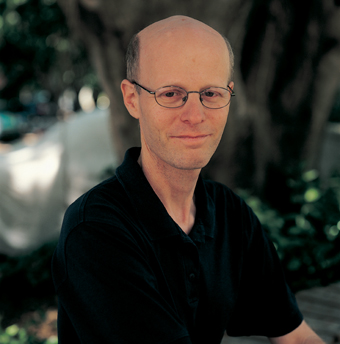Are you a journalist? Please sign up here for our press releases
Subscribe to our monthly newsletter:

When learning a new language, it’s hard enough trying to follow a conversation between two native speakers, but when one is in a room full of natives all speaking at once, it can be nearly impossible. Dr. Nir Friedman of the Weizmann Institute of Science’s Immunology Department knows only too well how difficult this can be: The molecular “language” of the immune cells he studies is “spoken” only in extremely noisy crowds.
When faced with a challenge such as an infection or cancer, the body’s corps of immune cells cooperate with one another in launching a coordinated counterattack. “Instructions” are passed down from one immune cell “rank” to another, and each type of immune cell carries out its specific “orders.” These instructions, however, are passed through molecules like cytokines – small proteins that carry information. But there is so much background “chatter,” it is difficult for scientists to understand exactly what is going on – which cell is “talking” to which, and how the molecular instructions they exchange get translated into cellular responses. To grasp the process, scientists just learning the language would prefer to narrow their observations down to single cells – in essence, to “listen” to just one cell at a time.
Although he is a physicist by training, Friedman was attracted to the life sciences; he wanted to apply experimental and theoretical tools from physics to the study of biological systems. During his postdoctoral studies at Harvard University, he and his colleagues developed a new method for detecting protein production that is so sensitive it can pick out single molecules in the single cells of the bacterium Escherichia coli. While many of today’s researchers work with green fluorescent reporter genes that, when inserted into DNA, glow brightly upon activation, Friedman and his colleagues employed an enzyme called beta-galactosidase as a reporter. The fluorescence does not come from the reporter molecule itself; it is produced when the enzyme cleaves a second substrate. The enzyme can cleave many substrate molecules per second, thus amplifying weak signals from even tiny amounts of protein. Unfortunately, in the first trials, as soon as the fluorescent signals were produced, they were pumped out of the cell – too quickly to be detected. To circumvent the problem, the scientists employed sophisticated miniature devices etched with closed chambers to trap individual cells, thus keeping the signals in one place long enough to be detected.
Now, at the Weizmann Institute, Friedman and his team intend to elaborate on the design of these artificial microenvironments so that they will finally be able to “listen in” on individual cytokine “conversations.” His initial research will concentrate on T helper cells – a type of white blood cell that secretes the instruction-bearing cytokines. The questions he is asking: Why do some of these T cells possess receptors for their own cytokines, giving them the ability to respond to their own signals? What benefit does this provide to the system, and how does it influence the response? Could this mean the response is all-or-nothing?
Combining these newly developed techniques with mathematical modeling and quantitative analyses may allow the scientists to predict how the cells will respond under varying conditions. These mathematical generalizations could then help shed light on processes concerning cell types other than T cells. Once the scientists are able to grasp basic “words” of the cytokine “language” from listening to individual cells, they hope to be more adventurous and open some of the chambers in the miniature devices, allowing more cells to “talk” to each other, even eavesdropping on the “chatter” of the crowd to hear what it can tell them.
Born in Tel Aviv, Dr. Nir Friedman received a B.Sc. in physics and mathematics from the Hebrew University of Jerusalem in 1989, via the prestigious “Talpiot” army study program. During his IDF service, he conducted M.Sc. studies in physics at Tel Aviv University, earning his degree in 1996. Friedman completed his Ph.D. studies under the guidance of Prof. Nir Davidson of the Weizmann Institute’s Physics of Complex Systems Department in 2001; he then stayed on as a postdoctoral fellow for two years in the lab of Prof. Joel Stavans of the same Department. He went on to spend four years as a postdoctoral fellow at Harvard University with Prof. Sunney Xie. In September 2007, Friedman joined the Weizmann Institute’s Immunology Department as a senior scientist. He is the recipient of a number of prestigious fellowships and awards, including the 2007 Career Development Award from the Human Frontier Science Program and the Weizmann Institute’s 2007 Sir Charles Clore Prize.
Friedman is married and is the father of three children. His hobbies include photography, listening to jazz and playing the drums in a jazz band.
Dr. Nir Friedman’s research is supported by the Sir Charles Clore Research Prize; the Crown Endowment Fund for Immunological Research; and the Abisch-Frenkel Foundation for the Promotion of Life Sciences.